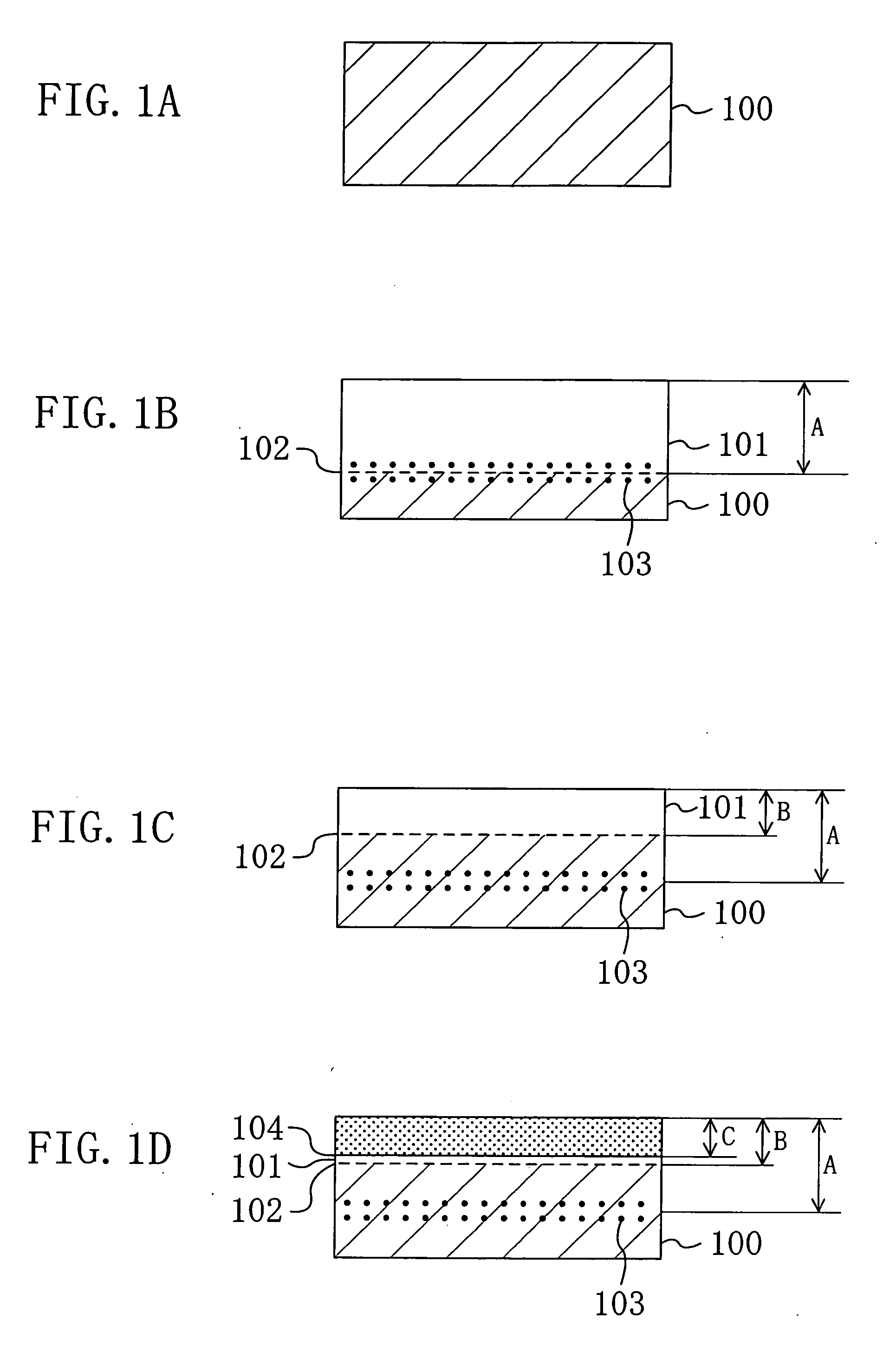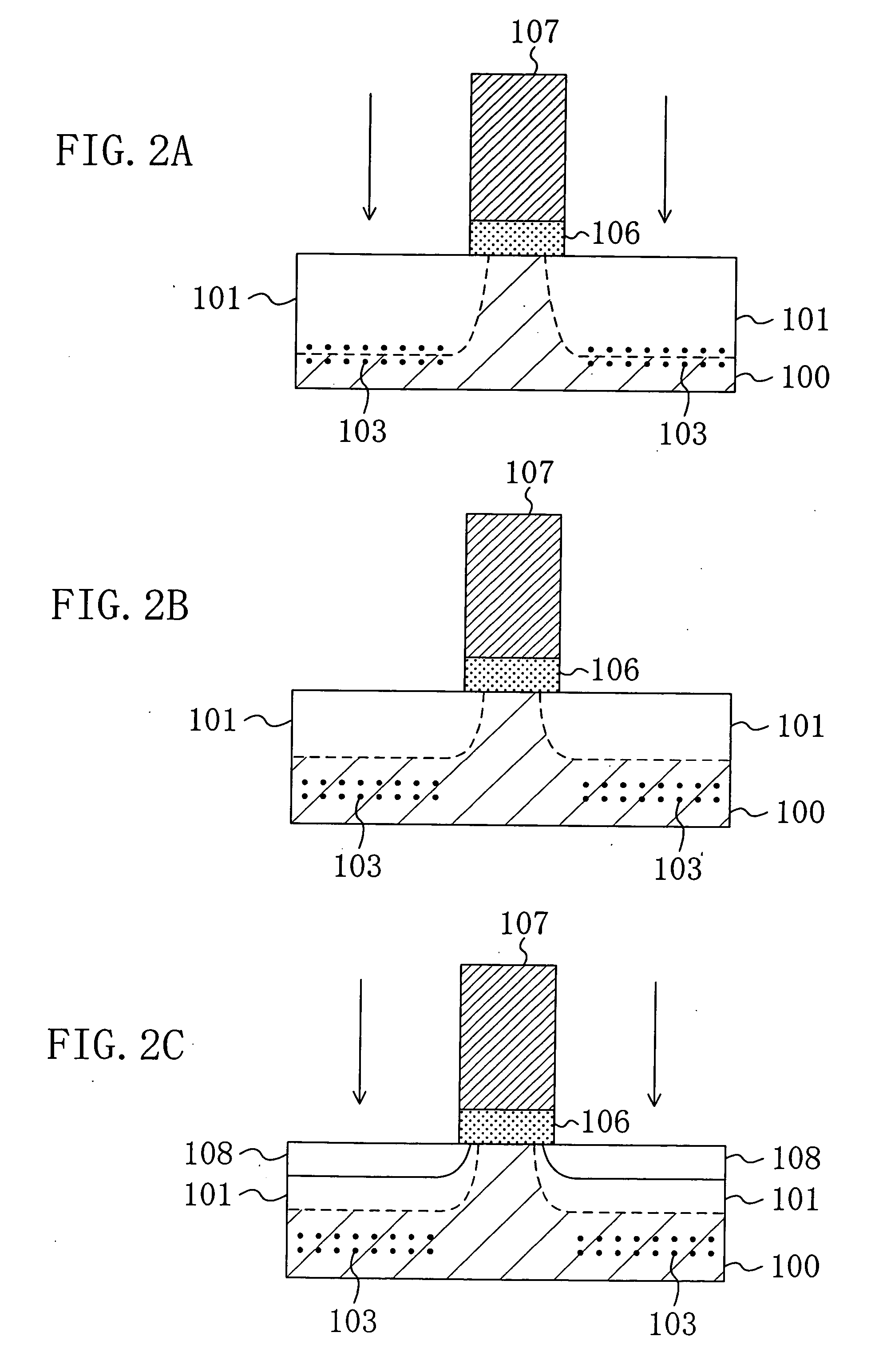Manufacturing method of a semiconductor device
a manufacturing method and semiconductor technology, applied in the direction of semiconductor devices, electrical devices, transistors, etc., can solve the problems of short-channel effect of transistors, critical drawbacks of mass production of system lsis having various, and extremely short heat treatment time in such short-time heat treatment technologies, so as to reduce short-channel effect and short-channel effect, reduce short-channel effect, and prevent pattern dependency
- Summary
- Abstract
- Description
- Claims
- Application Information
AI Technical Summary
Benefits of technology
Problems solved by technology
Method used
Image
Examples
first embodiment
[0072] Hereinafter, a method for manufacturing a semiconductor device according to a first embodiment of the invention will be described with reference to the accompanying drawings.
[0073] FIGS. 1(a) through 1(d) are schematic cross-sectional views showing the steps of the method for manufacturing a semiconductor device according to the first embodiment.
[0074] As shown in FIG 1(a), an n-type silicon substrate 100 is first prepared as an example of a semiconductor region.
[0075] As shown in FIG. 1(b), ions such as germanium or silicon are implanted into the silicon substrate 100 in order to form an amorphous layer 101 in the region from the surface of the silicon substrate 100 to a first depth A. At this time, defects 103 are generated near the interface between the silicon substrate 100 and a crystal region of the amorphous layer 101 (hereinafter, this interface is referred to as an amorphous-crystal interface 102), that is, near the first depth A. The first depth A for the amorpho...
second embodiment
[0085] Hereinafter, a method for manufacturing a semiconductor device according to a second embodiment of the invention will be described with reference to the accompanying drawings.
[0086] FIGS. 2(a) through 2(c) and FIGS. 3(a) through 3(c) are schematic cross-sectional views showing the steps of the method for manufacturing a semiconductor device according to the second embodiment.
[0087] As shown in FIG. 2(a), a polysilicon gate electrode 107 is formed on an n-type silicon substrate 100 as a semiconductor region with a gate insulating film 106 interposed therebetween. For example, the gate electrode 107 may be formed by using a known lithography technology and a known etching technology. For example, the gate length is 70 nm.
[0088] Ions such as germanium or silicon are implanted on both sides of the gate electrode 107 in the silicon substrate 100 in order to form an amorphous layer 101 with a thickness from the surface of the silicon substrate 100 to a first depth. The thickness...
third embodiment
[0110] Hereinafter, a method for manufacturing a semiconductor device according to a third embodiment of the invention will be described with reference to the accompanying drawings.
[0111] FIGS. 4(a) through 4(c) and FIGS. 5(a) through 5(c) are schematic cross-sectional views showing the steps of the method for manufacturing a semiconductor device according to the third embodiment.
[0112] First, as shown in FIG. 4(a), a polysilicon gate electrode 107 is formed on an n-type silicon substrate 100 as a semiconductor region with a gate insulating film 106 interposed therebetween. For example, the gate electrode 107 may be formed by using a known lithography technology and a known etching technology.
[0113] Thereafter, ions such as germanium or silicon are implanted on both sides of the gate electrode 107 in the silicon substrate 100 in order to form an amorphous layer 101 having a thickness from the surface of the silicon substrate 100 to a first depth. The thickness of the amorphous la...
PUM
 Login to View More
Login to View More Abstract
Description
Claims
Application Information
 Login to View More
Login to View More - R&D
- Intellectual Property
- Life Sciences
- Materials
- Tech Scout
- Unparalleled Data Quality
- Higher Quality Content
- 60% Fewer Hallucinations
Browse by: Latest US Patents, China's latest patents, Technical Efficacy Thesaurus, Application Domain, Technology Topic, Popular Technical Reports.
© 2025 PatSnap. All rights reserved.Legal|Privacy policy|Modern Slavery Act Transparency Statement|Sitemap|About US| Contact US: help@patsnap.com



